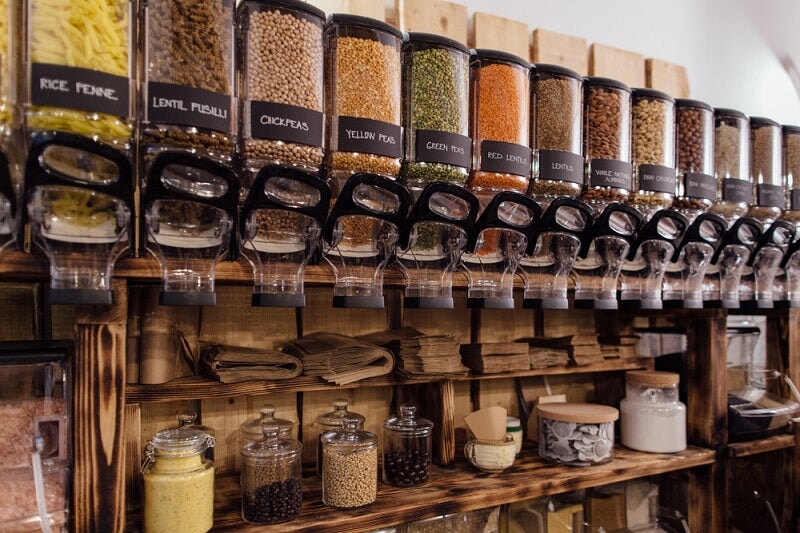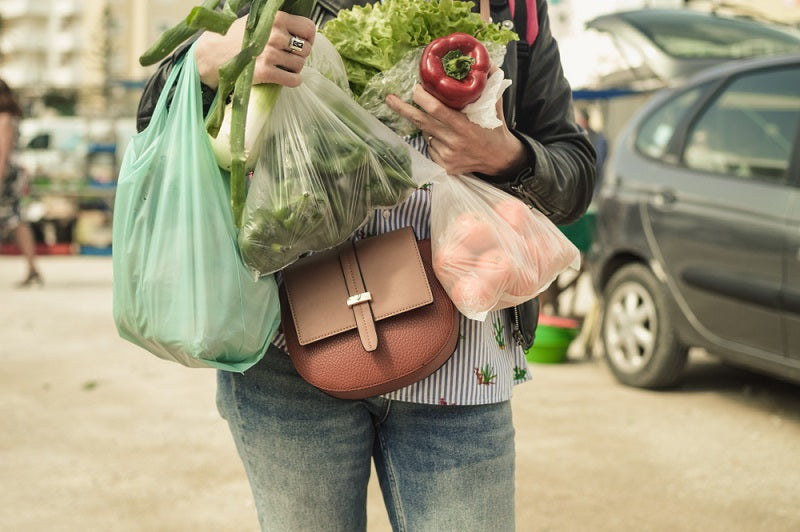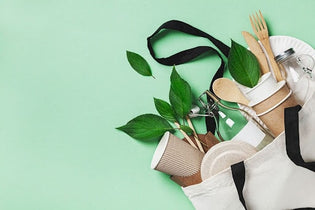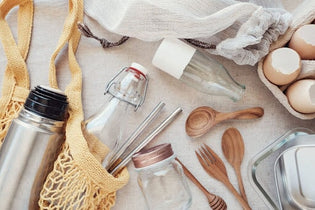
TLDR
Are you looking to do more to lessen your environmental impact?
More and more people are coming to share your desire. Composting at home is growing in popularity, and plastic recycling programs are slowly becoming widespread even in smaller communities across the nation.
Unfortunately, composting doesn’t reduce the amount of plastic packaging that we bring home. Packaging accounts for around one-half of all waste,1 and it comprises about one-third of what ends up in landfills.2 Moreover, the plastic product can only be recycled so many times before it becomes useless.
Thankfully, those looking for ways to reduce plastic waste in their lives are discovering one of the easiest—and cheapest!—methods is to buy in bulk to reduce packaging and plastic use. So, if you’re wondering how buying in bulk reduces waste and your plastic footprint, we’ll break it down for you here.
How Bulk Buying Uses Less Packaging
People are becoming increasingly aware of the plastic packaging problem posed by our landfills and our waters — particularly its scope. But most products remain available in small quantities with lots of unnecessary plastic bag wrapping—you’ll often find unnecessary plastic packaging within packaging!
All that plastic product (most of it is single-use plastic) not only has an environmental cost, it also has an economic effect. About 10% of the price of goods goes to cover the cost of the packaging.2
And for goods that we use a lot of, the packaging and plastic waste add up.
Buying in Bulk, By the Numbers
The University of Portland crunched some numbers on the potential effects of every American buying certain products in bulk for one year and the waste it would eliminate. They determined we could achieve reductions of:3
- Coffee – 240 million pounds of foil
- Almonds – 72 million pounds of packaging, mostly plastic
- Peanut butter – 7 pounds of waste per family
- Oatmeal – One-fifth the amount of packaging
The Bulk Aisle
Looking for ways to reduce plastic waste? The bulk aisle at your grocery store is a paradise for those interested in waste reduction. The stores receive these dry goods in huge containers and allow customers to portion out the exact quantity they want without extensively wrapping each serving.
Grocery stores do typically offer single-use plastic bags at the bulk aisle—though some are switching to paper—to take the goods home in, they also allow customers to bring their own reusable bags.
Some stores even offer bulk liquid goods, from beverages to cleaning and toiletry products, which shoppers can pump or pour into their own reusable bottles.
Good Things Come In Small Packages
Some products can’t be sold unpackaged like the items in the bulk aisle. But even in those cases, buying bulk quantities can reduce the total amount of packaging that we take home only to immediately throw away.
Based on the surface area of 30 rolls of toilet paper, the product-sustainability review experts at Finch calculated that individually wrapped rolls use 2.5 more plastic bag packaging than 30 rolls packaged together. 2However, each roll requires a little extra material at the top and bottom, so the real difference is probably even greater.

Invasion of the Plastic Bags
Plastic bags have long been used to carry groceries and household items due to their convenience and low cost. However, buying bulky items like toilet paper and paper towels as part of regular grocery runs often means there is limited space in the car for additional items. This results in smaller quantities being purchased and more frequent trips to the store, leading to an increase in the use of single-use plastic bags.
Though many communities are banning their use, the amount of these bags still produced is staggering:4
- 160,000 per second
- 7 trillion per year (over half a trillion so far this year)
- 700 per year per person
These bags typically see use for between 12 and 20 minutes on average, but they take between 400 to 1,000 years to biodegrade.1 And even when they do eventually degrade, that process puts harmful microplastic particles in our precious water supplies.

Reel In Waste with Reel Paper
There can be some environmental risks associated with buying in bulk: Another significant portion of what goes into our landfills is wasted food. But with daily-use paper products, it’s almost impossible to buy too much. All you have to worry about is what you have space for. Knowing how to buy in bulk and some efficient toilet paper storage ideas can easily solve it.
At Reel Paper, our bamboo toilet paper and 100% recycled bamboo paper towels are not only tree-free, but they arrive at your door in plastic-free packaging. Even our facial tissue boxes skip that little sheet of plastic film other brands seem determined to include at the top.
And when you have our bulk toilet paper and paper towels shipped right to your door, you’re reducing plastic waste and emissions at every stage of the process, and saving money to boot.
It would truly be a waste not to.
Sources:
- Zero Waste. How to Buy in Bulk to Reduce Waste. https://www.zerowaste.com/blog/bulk-purchasing-reduce-waste/
- Finch. The Pros, Cons, and Environmental Impacts of Buying in Bulk. https://choosefinch.com/blog/cheaper-by-the-dozen
- NC State University. 5 Things To Buy In Bulk to Save Money + Reduce Waste. https://sustainability.ncsu.edu/blog/changeyourstate/5-things-buy-in-bulk-save-money/
- The World Counts. Plastic Bags Used Per Year. https://www.theworldcounts.com/challenges/planet-earth/waste/plastic-bags-used-per-year




0 comments